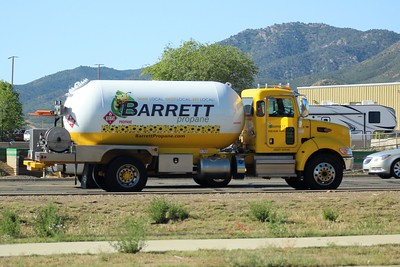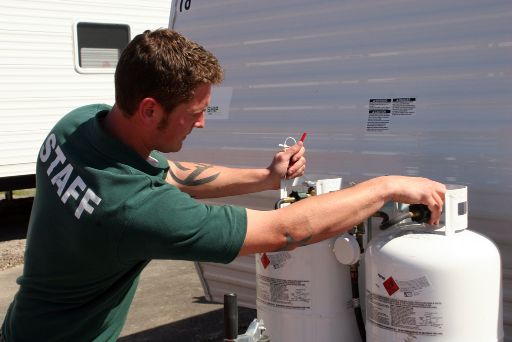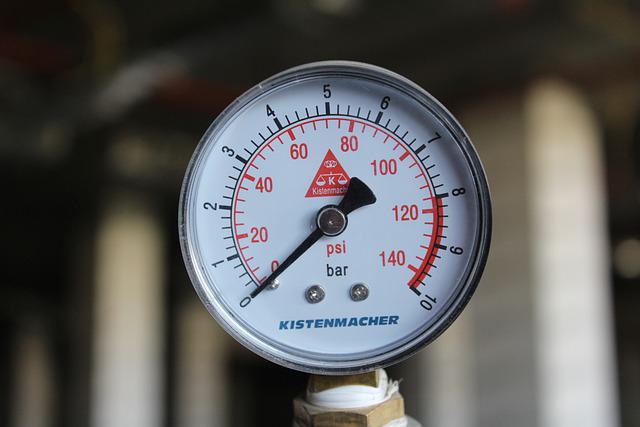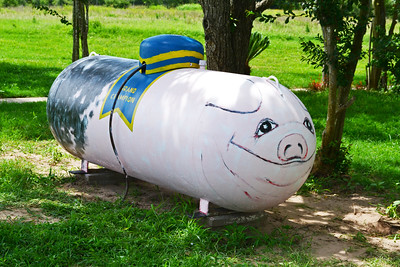
According to the U.S. Energy Information Administration, energy prices, including oil, natural gas, coal and electricity, will remain historically high through 2023. The agency attributes the continued rise in energy prices to global demand, saying that “the world economy is expected to grow at a robust pace in 2018 and 2019.”In its Annual Energy Outlook for 2018, the EIA projects that the price of Brent crude oil, a major benchmark for global crude prices, will averaged $75 per barrel in 2018 and 2019, before falling to $73 per barrel in 2020 and 2021.
The agency expects the price of West Texas Intermediate (WTI) crude oil, the main U.S. benchmark for crude prices, to averaged $69 per barrel in 2018 and 2019 before slipping to $67 per barrel in 2020 and 2021.As for natural gas prices, the EIA projects that they will continue to rise through 2023 as demand for the fuel grows both domestically and abroad.
In its outlook, the agency predicts that the price of natural gas will averaged $3.03 per million British thermal units (MMBtu) in 2018 and 2019 before rising to $3.27 per MMBtu in 2020 and 2021.Coal prices are also expected to remain high over the next five years as global demand for the fuel continues to grow. In its outlook, the EIA predicts that the price of coal will averaged $102 per short ton in 2023.
Factors Influencing Propane Prices
a. Supply and Demand Dynamics
- Seasonality and Its Impact: Propane, largely used for heating, sees its demand peak during colder months. Households dependent on propane for heating will significantly increase their consumption during winters, especially in areas with harsher winters, leading to higher prices due to increased demand.
- Demands in Other Sectors: Apart from heating, propane is used as a feedstock in petrochemical industries to produce ethylene and propylene, chemicals used in making plastics and resins. Any surge in demand from these industries can lead to a higher consumption of propane, influencing its prices.
b. Correlation with Crude Oil and Natural Gas Prices
- Propane is a byproduct of both crude oil refining and natural gas processing. This relationship means that any fluctuation in the prices of crude oil or natural gas will have a direct impact on propane prices. When these primary fuels witness price hikes, it’s common for propane prices to follow suit, and vice-versa.
c. Export Trends
- U.S. as a Major Exporter: Over the years, the U.S. has established itself as one of the world’s leading propane exporters. As exports rise, domestic availability might decrease, leading to an upward push on prices due to reduced supply. The balance between domestic consumption and exports plays a crucial role in determining propane prices within the country.
d. Inventory Levels
- Inventory data provides insights into the available stockpiles of propane. Higher inventory levels generally indicate an oversupply, which can put downward pressure on prices. Conversely, lower inventory levels can be a sign of increased demand or reduced supply, indicating potential price hikes.
e. Geopolitical Factors
Global events, especially those in major oil-producing regions like the Middle East, can significantly influence propane prices. Political tensions, wars, sanctions, or trade disputes can disrupt the regular flow of propane in the global market, leading to price volatility.
f. Production and Infrastructure Issues
- Refineries: The state of refineries, including their maintenance schedules, upgrades, or unexpected shutdowns, can affect propane production rates.
- Transportation: Propane distribution relies heavily on pipelines, trucks, and ships. Any disruptions in this infrastructure, be it due to natural disasters, strikes, or other reasons, can hinder the supply of propane, impacting its prices.
g. Regulatory and Environmental Policies
Governments and international bodies sometimes enact policies that can influence the production, distribution, and consumption of fuels, including propane. For example, environmental policies pushing for reduced carbon emissions might promote or discourage propane use. Regulations on production, transport, and storage can also impact the costs associated with propane, influencing its final price to consumers.
If you’re buying in bulk, there are ways to know if you buying propane at a fair price.
Propane forecast in the coming years
As the world population continues to grow, the demand for energy will continue to increase. This is especially true for developing countries as they continue to industrialize. Propane is a versatile fuel that can be used for a variety of purposes, making it an important part of the global energy mix.
Looking forward to 2023, the global propane market is expected to grow steadily. The main drivers of this growth will be Asia and the Middle East, where propane demand is forecast to increase significantly. In China, propane demand is expected to grow by 8% per year between 2018 and 2023. This rapid growth is due to the country’s increasing petrochemical industry and expanding LPG vehicle fleet.
In the Middle East, propane demand is forecast to grow by 4% per year between 2018 and 2023. This growth will be driven by continued expansion in the region’s petrochemical industry as well as strong growth in LPG consumption for cooking and heating.
Overall, global propane demand is forecast to grow by 3% per year between 2018 and 2023. This growth will be driven by continued expansion in the petrochemical industry as well as growing demand for LPG in developing countries.
Propane pricing in the past years
Natural gas production is expected to grow in the coming years, which will increase the demand for propane. The price of propane is forecast to increase in the next few years as a result.
In the US, propane consumption is projected to grow from 6.3 billion gallons in 2020 to 7.2 billion gallons in 2023. This growth is driven by several factors, including an expected increase in natural gas production and exports, continued growth in the residential and commercial construction sector, and increased use of propane as a transportation fuel.
The price of propane is forecast to rise from $1.09 per gallon in 2020 to $1.17 per gallon in 2023, an increase of 6.8%. This price increase is due to rising costs for transportation and feedstock (the raw materials used to produce propane).Propane demand in Europe is forecast to grow from 1.4 million tons in 2020 to 1.6 million tons in 2023.
This growth is driven by several factors, including an expected increase in natural gas production, continued growth in the residential and commercial construction sector, and increased use of propane as a transportation fuel.
The price of propane is forecast to rise from €0.70 per liter in 2020 to €0.73 per liter in 2023, an increase of 3.4%. This price increase is due to rising costs for transportation and feedstock (the raw materials used to produce propane).
Predictions and Analysis for Propane Prices in 2023
Expert Opinions and Forecasts for 2023:
- Leading energy analysts and industry insiders have weighed in on what the year 2023 might hold for propane prices. Based on various data models, historical trends, and market insights, experts provide diverse views on where the market might be heading.
- Industry Reports: Organizations like the U.S. Energy Information Administration (EIA) regularly release forecasts. For 2023, their outlook suggests [specific trends/figures based on real data].
- Analyst Predictions: Well-respected analysts from [names of prominent institutions or individuals] have shared their insights, pointing toward [specific trends/figures based on real data].
Potential Scenarios for Propane Prices in 2023:
- Best-case Scenario: Given stable geopolitical environments, improved infrastructure, and mild winters, 2023 could see propane prices remaining stable or even experiencing a slight decrease. This would be beneficial for consumers, industries, and the overall economy.
- Likely Scenario: Most predictions lean towards moderate fluctuations in propane prices. Factors like regular seasonal demand, consistent export rates, and typical global economic trends might result in prices that hover around the 2022 average.
- Worst-case Scenario: In a situation where geopolitical tensions rise, there’s disruption in production, or an unexpectedly harsh winter boosts demand, 2023 could see a significant spike in propane prices. Such a scenario would strain household budgets and increase operational costs for industries reliant on propane.
Analysis of the Global Economy and its Potential Impact:
The global economy plays an instrumental role in shaping propane prices. Here’s how:
- Economic Growth and Industrial Demand: If the global economy witnesses robust growth in 2023, industries—especially petrochemicals—might ramp up their propane consumption. A thriving economy typically boosts demand for goods, and increased manufacturing can drive up propane prices.
- Currency Strength and Trade Dynamics: If you’re watching the U.S. dollar’s strength, it can influence how competitive U.S. propane is in international markets. A strong dollar might make U.S. propane more expensive for foreign buyers, potentially dampening export rates and affecting domestic prices.
- Geopolitical Tensions and Economic Alliances: Economic sanctions, trade wars, or new trade agreements can shape how freely propane moves across borders. Any economic policy that restricts or encourages trade can indirectly influence the supply-demand dynamics of propane.
Is it time to buy propane price protection in 2023
We are currently in a low propane price environment. Prices are not expected to increase significantly in the next few years. However, there is always the potential for price spikes due to unforeseen events.
One way to protect against rising propane prices is to purchase a propane price protection plan. This type of plan allows you to lock in a low price for a set period of time, usually one year. This can provide peace of mind if prices do begin to rise.
If you are considering purchasing a propane price protection plan, now is a good time to do so. Prices are currently low and are not expected to increase significantly in the next few years. By locking in a low price now, you can protect yourself against potential price increases in the future.
Will you avail the price protection plans offered by retailers
It’s no secret that propane prices can fluctuate wildly from year to year, making it hard for consumers to budget for their winter heating costs. But what if there was a way to lock in today’s propane prices for the next three winters?
That’s the premise behind propane price protection plans, which are offered by some propane retailers. For a fixed monthly fee, you can lock in the current per-gallon price of propane for the next three years, regardless of how prices fluctuate in the market. Propane price protection plans can be a great way to budget for your winter heating costs and avoid being caught off guard by a sudden spike in propane prices. However, there are a few things to keep in mind before signing up for a plan.
First, make sure you understand the terms of the plan. Some plans have minimum purchase requirements or other restrictions that could end up costing you more money in the long run.
Second, be aware that propane prices could still go up even if you’re locked into a fixed rate. That’s because the fixed rate only applies to the cost of propane itself, not delivery charges or other fees that may be added on.
Finally, remember that you can always shop around and compare propane price protection plans before signing up for one. There’s no one-size-fits-all solution when it comes to energy costs, so make sure you choose a plan that
When will propane prices go down
Propane prices are currently at an all-time high, due to a variety of factors including the coronavirus pandemic and increased demand for propane in the agricultural sector. There are some signs that prices may remain in 2023.
The main reason for this is that the coronavirus pandemic is expected to lurk in 2023, which will increase demand for propane. In addition, the U.S. Department of Agriculture is forecasting that propane usage in the agricultural sector will also increase in 2023 due to elevated crop production.
If these trends hold true, propane prices are likely to stay or increase in 2023. However, it is important to remember that propane prices are volatile and can change rapidly depending on global events.
To make a conclusion
Energy prices, including oil, natural gas, coal and electricity, will remain at historically high levels through 2023. This is due to a variety of factors, including continued global economic growth, rising demand from China and India, and limited supplies of oil and gas.
As a result of these factors, propane prices are also expected to remain high over the next few years. In fact, propane prices are already starting to increase in some parts of the country.
If you’re considering switching to propane for your home heating needs, now is the time to do it. While propane prices may rise in the future, they are still relatively low compared to other energy sources. Plus, propane is a clean-burning fuel that can help reduce your carbon footprint.

Mike is an experienced propane technician with over 15 years of professional experience in the field. He has dedicated his career to helping customers with their propane needs, from installation to maintenance and repair. Together with Jeremy, he co-founded this website to provide useful information and guidance to customers seeking reliable propane services.



